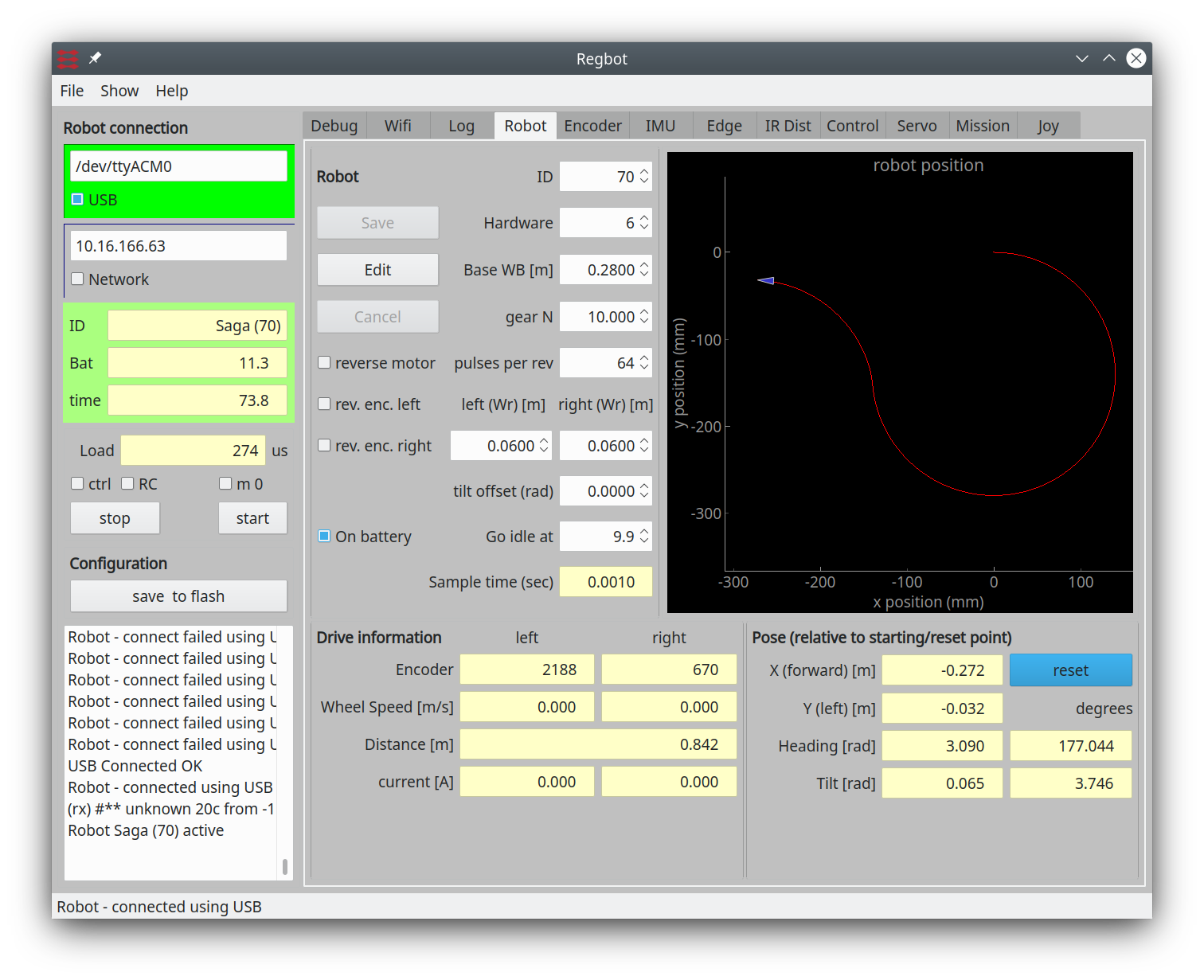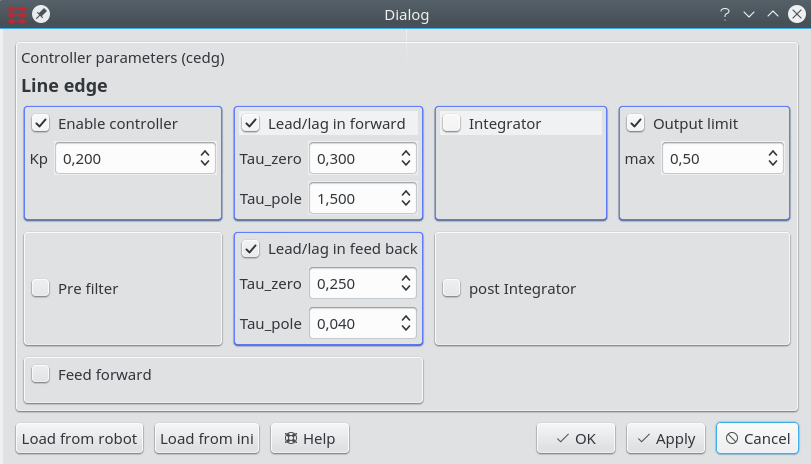Regnot settings for Robobot
(→Edge control) |
(→Edge control) |
||
| Line 41: | Line 41: | ||
* and velocity reach 0 | * and velocity reach 0 | ||
* make a 3-point 180 degree turn | * make a 3-point 180 degree turn | ||
| − | * follow the other side of line - now a right curve (until log is full | + | * follow the other side of line - now a right curve (until log is full or 10 meters or crossing another black line) |
The difference between a left and a right curve is the "edger=1.0" and "edger=-1.0", this makes the robot follow the curve with an offset of 1cm towards the center of the curve (more left in a left curve). This gives more space for overshoot when hitting the curve - the sensor range is about +/- 2cm. | The difference between a left and a right curve is the "edger=1.0" and "edger=-1.0", this makes the robot follow the curve with an offset of 1cm towards the center of the curve (more left in a left curve). This gives more space for overshoot when hitting the curve - the sensor range is about +/- 2cm. | ||
| + | |||
| + | If the line is no longer valid, then the last curvature is maintained, i.e. there is a chance that the the line will be re-found. | ||
Revision as of 18:16, 12 March 2017
This is some suggestions for changed settings for Robobot.
Robot configuration
Metric setup
The distance between driving wheels are different from a Regbot.
Control issues
Some examples of control settings.
Edge control
For higher speed in the range 0.7-0.9 m/s the following control settings could be used.
The control uses a Lag-controller to decrease the static gain by a factor 5 (a pole with a time constant of 1.5 sec and a zero with a time constant of 0.3 seconds). This means that the high frequency gain is Kp*0.3/1.5 = 0.06.
The gain is further scaled by the speed (from firmware version 604), so that the gain is reduced to half at 0.5m/s, but the filter times are maintained. This is probably a bad solution, as the response probably is more distance driven than time driven.
A test script to could be:
thread=1 vel=0.01, acc=5.0, log=50.0: time=0.2 vel=0.9, edger=1, white=0: dist=10.0, xb=20 vel=0,event=7 : xb<10 :vel< 0.1 vel=-0.3,tr=0.1:turn=60 vel=0.3,tr=0.1:turn=60 vel=-0.3,tr=0.1:turn=60 vel=0.7, edger=-1, white=0: dist=10.0, xb=20, log=0
The mission follows right side of line,
- in a left curve (1mØ) until crossing a line
- wait for crossing line to disappear,
- and velocity reach 0
- make a 3-point 180 degree turn
- follow the other side of line - now a right curve (until log is full or 10 meters or crossing another black line)
The difference between a left and a right curve is the "edger=1.0" and "edger=-1.0", this makes the robot follow the curve with an offset of 1cm towards the center of the curve (more left in a left curve). This gives more space for overshoot when hitting the curve - the sensor range is about +/- 2cm.
If the line is no longer valid, then the last curvature is maintained, i.e. there is a chance that the the line will be re-found.

